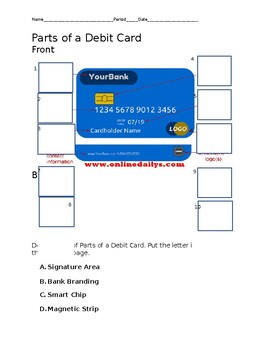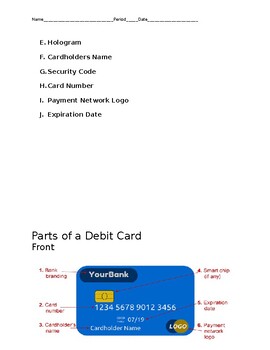In the digital age, where information is constantly being generated and shared, the way we categorize and label our content has become pivotal. A card label serves as an essential component of digital design and user experience. This article explores what a card label is, its applications, advantages, and potential downsides, ensuring that you have a comprehensive understanding of this vital aspect of web design.
Table of Contents
- Definition of Card Label
- Importance of Card Labels in Web Design
- Examples of Card Labels
- Pros and Cons of Using Card Labels
- Best Practices for Designing Effective Card Labels
- Comparison of Card Labels vs. Traditional Labels
- Frequently Asked Questions
Definition of Card Label
A card label is a textual or graphical element that identifies a specific card in a card-based UI design. It typically includes a brief description, an image, and sometimes additional information that provides contextual understanding for the user. Card labels enhance navigation, improve user experience, and help in organizing content effectively.
Importance of Card Labels in Web Design
Card labels are crucial in creating a visually appealing and user-friendly interface. They serve multiple roles:
- **Categorization**: Card labels categorize content, making it easier for users to find relevant information.
- **Visual Hierarchy**: They help in establishing a visual hierarchy, guiding users through the content ecosystem.
- **Engagement**: Well-designed card labels can drive user engagement by attracting attention and encouraging interaction.

Examples of Card Labels
Card labels can be found across various platforms and applications. Here are a few common examples:
- **Social Media**: Facebook and Instagram use card labels for posts, highlighting key details like likes, comments, and shares.
- **E-commerce**: Online retailers like Amazon organize products within card labels that include images, prices, and ratings.
- **News Websites**: News outlets often use card labels to display article headlines, summaries, and images in a grid format.
Pros and Cons of Using Card Labels
Pros of Card Labels
- Enhanced Navigation: Card labels streamline the navigation process by categorizing content clearly.
- Improved Aesthetics: A visually appealing layout increases user interest and retention.
- Responsive Design: Card labels adapt well to different screen sizes, ensuring accessibility across devices.
Cons of Card Labels
- Information Overload: If overused, they can create clutter and overwhelm users.
- Limited Space: Brief labels may not provide enough information for complex content.
- Design Constraints: Card labels need to conform to specific design guidelines, which may limit creativity.
Best Practices for Designing Effective Card Labels
When designing card labels, there are several best practices to keep in mind:
- Keep It Concise: Ensure labels are brief but descriptive enough to convey the essential information.
- Use Hierarchical Typography: Vary font sizes and styles to establish a clear hierarchy of information.
- Incorporate Visual Elements: Use images or icons to enhance the appeal and informational value of the labels.
Comparison of Card Labels vs. Traditional Labels

| Feature | Card Labels | Traditional Labels |
|---|---|---|
| Visual Appeal | Highly visual and engaging | Often minimalistic and functional |
| Information Density | Can include images and text | Typically text-only |
| Responsiveness | Adaptable to various screen sizes | Static layout |
| User Engagement | Encourages interaction through design | Less engaging due to simplicity |
Frequently Asked Questions

1. What are the key elements of a card label?
The key elements usually include a title, image, description, and any relevant action buttons.
2. How do card labels improve user experience?
They reduce cognitive load by organizing information in a visually digestible format, guiding users to important content quickly.
3. Can card labels be used in mobile applications?
Yes, card labels are particularly effective in mobile applications due to their adaptable design and responsive nature.
4. Are there specific industries that benefit more from card labels?
E-commerce, social media, and news industries often see significant benefits from using card labels in their design.
5. How can I test the effectiveness of my card labels?
A/B testing, user feedback, and analytics can provide insights into the effectiveness of your card labels.
6. What tools can I use to create card labels?
Web design tools like Figma, Adobe XD, and CSS frameworks such as Bootstrap can help you create effective card labels.
The role of card labels in web design cannot be overstated. By organizing content intelligently, enhancing user experience, and driving engagement, card labels remain a fundamental aspect of modern digital interfaces.